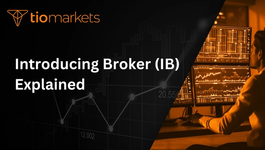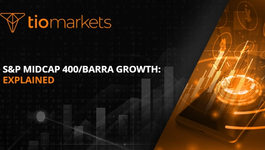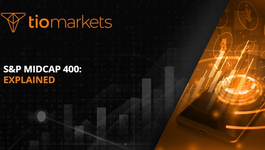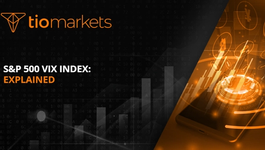What Are Tangible Assets? | Definition and Examples - TIOmarkets
BY TIOmarkets
|June 4, 2024Tangible assets play a pivotal role in the financial world, offering a solid foundation for businesses and investors alike. This article delves into the essence of tangible assets, their types, and their significance in today's economic landscape.
Understanding Tangible Assets
Tangible assets are the backbone of many businesses, providing the physical substance that can be seen, touched, and quantified. These assets are crucial for the operation and revenue generation of companies across various sectors.
Let's explore the characteristics and types of tangible assets to gain a comprehensive understanding of their role in the financial ecosystem.
Characteristics of Tangible Assets
Tangible assets are characterized by their physical form, which can range from buildings and machinery to inventory and vehicles. They are typically used in the production of goods and services or held for resale.
Another key feature of tangible assets is their depreciation over time. Unlike intangible assets, physical assets wear out and lose value, which is accounted for through depreciation in financial statements.
Moreover, the physical nature of tangible assets provides a sense of security and stability to investors and lenders. The tangibility of these assets offers a level of assurance that intangible assets cannot match, making them a preferred choice for collateral in financial transactions.
Types of Tangible Assets
There are primarily two categories of tangible assets: current and fixed assets. Current assets include inventory and other items that are expected to be converted into cash within a year. Fixed assets, on the other hand, are long-term resources like land, buildings, and equipment.
Each type of tangible asset plays a unique role in the financial health and operational capabilities of a business.
Furthermore, within the category of fixed assets, there are subcategories such as tangible assets under construction. These assets represent investments in progress, such as buildings or infrastructure projects, and are crucial for companies involved in long-term development initiatives.
Examples of Tangible Assets
To illustrate the concept of tangible assets, let's look at some common examples found in businesses around the world.
Real Estate
Real estate encompasses land and any structures on it, such as office buildings, warehouses, and retail spaces. It is a key asset for many businesses, providing the space needed for operations and potentially appreciating in value over time.
Moreover, real estate investments offer diversification benefits to portfolios, reducing overall risk exposure. By including real estate as a tangible asset, investors can enhance their risk-adjusted returns and create a more balanced investment strategy.
Machinery and Equipment
Machinery and equipment are essential for manufacturing, construction, and many other industries. These assets are used in the production of goods and services, contributing directly to a company's output.
Additionally, advancements in technology have led to the development of more sophisticated machinery and equipment, enhancing operational efficiency and productivity. Companies that invest in modern equipment gain a competitive edge in their respective industries, driving growth and profitability.
Inventory
Inventory includes raw materials, work-in-progress, and finished goods that are held for sale. It is a crucial component of retail and manufacturing businesses, directly affecting their revenue and cash flow.
Effective inventory management is essential for optimizing working capital and ensuring smooth operations. By implementing inventory control systems and demand forecasting techniques, businesses can minimize stockouts, reduce carrying costs, and improve overall profitability.
Valuation and Importance of Tangible Assets
Understanding the valuation and importance of tangible assets is essential for investors and business owners alike.
Valuation of Tangible Assets
The valuation of tangible assets involves estimating their worth, taking into account factors such as market value, depreciation, and replacement cost. Accurate valuation is crucial for financial reporting, investment analysis, and business strategy.
Furthermore, valuation methods for tangible assets vary depending on the asset type and industry standards. For example, real estate assets may be appraised using comparative market analysis, while machinery and equipment could be valued based on their income-generating potential.
Importance of Tangible Assets
Tangible assets are not just physical objects; they are critical resources that support the operational and financial stability of a business. They can serve as collateral for loans, contribute to the production of goods and services, and provide a safety net during economic downturns.
Moreover, tangible assets play a vital role in enhancing a company's creditworthiness and borrowing capacity. Lenders often consider the value of tangible assets when assessing the risk profile of a business, influencing the terms and conditions of financing arrangements.
Risks Associated with Tangible Assets
While tangible assets are valuable resources, they also come with their own set of risks.
Depreciation and Obsolescence
Physical assets depreciate over time, which can lead to a decrease in their value. Additionally, technological advancements can render certain assets obsolete, further impacting their worth.
Companies must regularly assess the condition and utility of their tangible assets to mitigate depreciation risks. Implementing maintenance schedules, upgrading outdated equipment, and diversifying asset portfolios can help minimize the impact of depreciation and obsolescence.
Market Fluctuations
The value of tangible assets like real estate and commodities can be highly volatile, subject to market conditions and economic factors. This volatility requires careful management to mitigate potential losses.
Furthermore, companies exposed to market fluctuations in tangible assets may use hedging strategies to protect against adverse price movements. Hedging instruments such as futures contracts and options provide a means of managing risk exposure and stabilizing financial performance.
Conclusion
Tangible assets are a fundamental component of the financial landscape, offering tangible value and operational support to businesses. By understanding their characteristics, types, and significance, investors and business owners can make informed decisions about asset management and investment strategies.
At TIOmarkets, we recognize the importance of tangible assets in achieving financial stability and growth. Explore our platform for more insights and strategies on managing your tangible asset portfolio effectively.
```
Start Trading Tangible Assets with TIOmarkets
Now that you understand the value of tangible assets, take the next step in your financial journey with TIOmarkets. Join over 170,000 traders across 170 countries who are already benefiting from our low-fee trading platform. With access to 300+ instruments across 5 markets, including Forex, indices, stocks, commodities, and futures, you have a world of opportunities at your fingertips. Enhance your trading skills with our comprehensive educational resources and step-by-step guides. Ready to dive into the market? Create a Trading Account today and start shaping your investment future.

Risk disclaimer: CFDs are complex instruments and come with a high risk of losing money rapidly due to leverage. You should consider whether you understand how CFDs work and whether you can afford to take the high risk of losing your money. Never deposit more than you are prepared to lose. Professional client’s losses can exceed their deposit. Please see our risk warning policy and seek independent professional advice if you do not fully understand. This information is not directed or intended for distribution to or use by residents of certain countries/jurisdictions including, but not limited to, USA & OFAC. The Company holds the right to alter the aforementioned list of countries at its own discretion.
Join us on social media

Behind every blog post lies the combined experience of the people working at TIOmarkets. We are a team of dedicated industry professionals and financial markets enthusiasts committed to providing you with trading education and financial markets commentary. Our goal is to help empower you with the knowledge you need to trade in the markets effectively.





